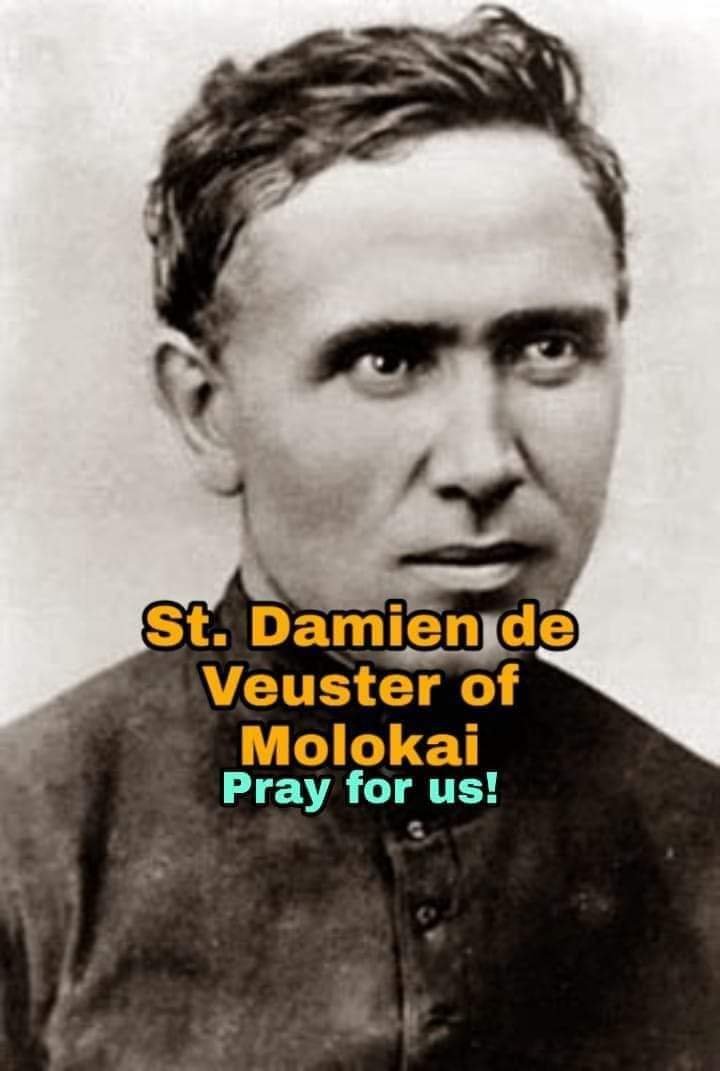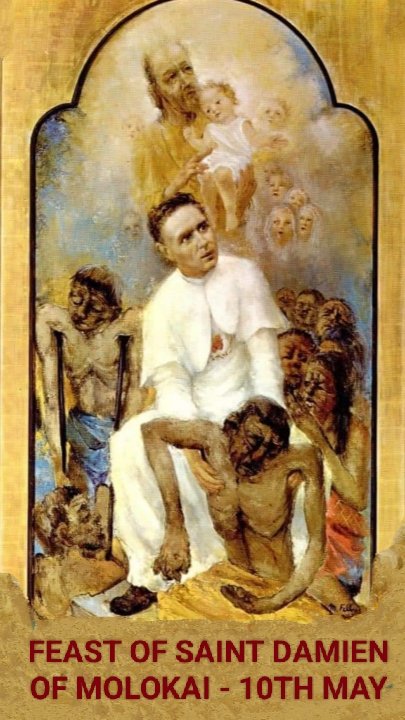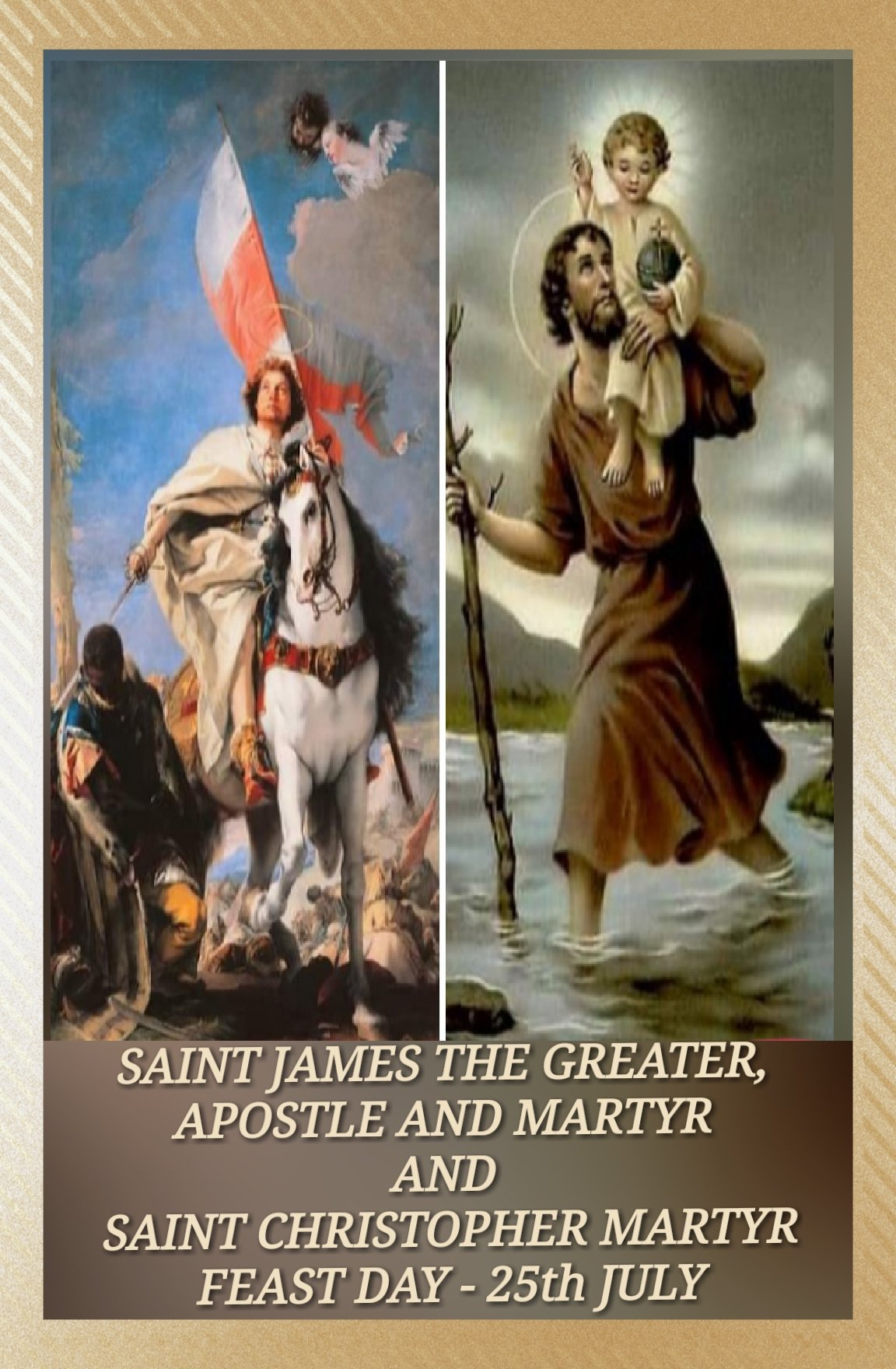
TODAY’S GOSPEL READING – 9 MAY
May 9, 2024
2 Thessalonians 3:3
May 10, 2024FEAST OF SAINT DAMIEN OF MOLOKAI, PRIEST
FEAST DAY – 10th MAY
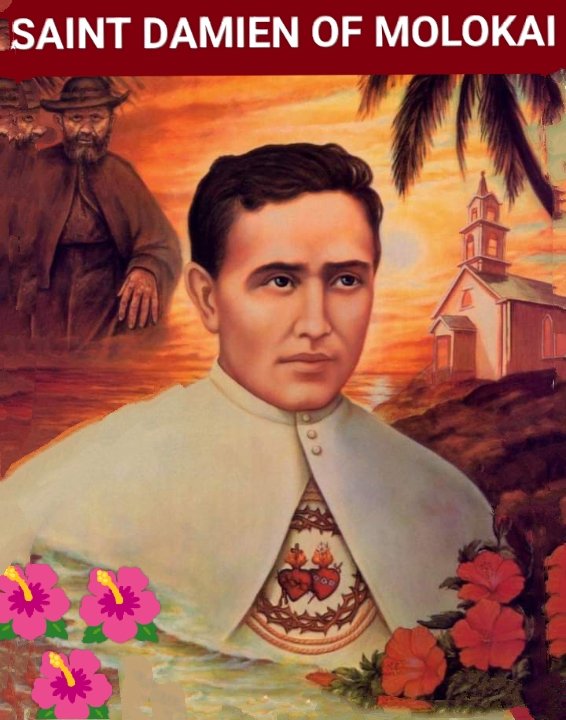
Father Damien or Saint Damien of Molokai, (3 January 1840 – 15 April 1889), was born Jozef De Veuster, and was a Roman Catholic priest from Belgium and member of the Congregation of the Sacred Hearts of Jesus and Mary, a missionary religious institute. He was recognized for his ministry, which he led from 1873 until his death in 1889.
He worked in the Kingdom of Hawaiʻi for people with leprosy (Hansen’s disease), who lived in government-mandated medical quarantine in a settlement on the Kalaupapa Peninsula of Molokaʻi. During this time, he taught the Catholic faith to the people of Hawaii. Father Damien also cared for the patients and established leaders within the community to build houses, schools, roads, hospitals, and churches.
He dressed residents’ ulcers, built a reservoir, made coffins, dug graves, shared pipes, and ate poi with them, providing both medical and emotional support. After eleven years caring for the physical, spiritual, and emotional needs of those in the leper colony, Father Damien contracted leprosy. He continued with his work despite the infection but finally succumbed to the disease on 15 April 1889.
Father Damien also had tuberculosis which worsened his condition, but people think that the reason he volunteered in the first place was due to his illness of tuberculosis. Father Damien has been described as a “martyr of charity”. Damien De Veuster is venerated as a saint in the Catholic Church. In the Anglican Communion and other Christian denominations, Damien is considered the spiritual patron for leprosy and outcasts.
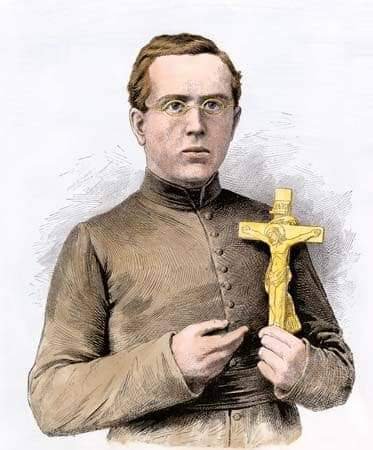
Father Damien Day, 15 April, the day of his death, is also a minor statewide holiday in Hawaii. Father Damien is the patron saint of the Diocese of Honolulu and of Hawaii. Father Damien was canonized by Pope Benedict XVI on 11 October 2009. Libert H. Boeynaems, writing in the Catholic Encyclopedia, calls him “the Apostle of the Lepers.” Father Damien’s feast day is 10 May.
Father Damien was born the youngest of seven children and fourth son of the Flemish corn merchant Joannes Franciscus (“Frans”) De Veuster and his wife Anne-Catherine (“Cato”) Wouters in the village of Tremelo in Flemish Brabant in rural Belgium on 3 January 1840.
His older sisters Eugénie and Pauline became nuns, and his older brother Auguste (Father Pamphile) joined the Congregation of the Sacred Hearts of Jesus and Mary (Picpus Fathers). Jozef was forced to quit school at age 13 to work on the family farm. His father sent him to a college at Braine-le-Comte to prepare for a commercial profession.
But as a result of a mission given by the Redemptorists in 1858, Joseph decided to pursue a religious vocation. Jozef entered the novitiate of the Fathers of the Sacred Heart of Jesus and Mary at Louvain and took in religion the name of Damien, presumably after the first Saint Damian, a fourth-century physician and martyr. He was admitted to the religious profession on 7 Oct. 1860.
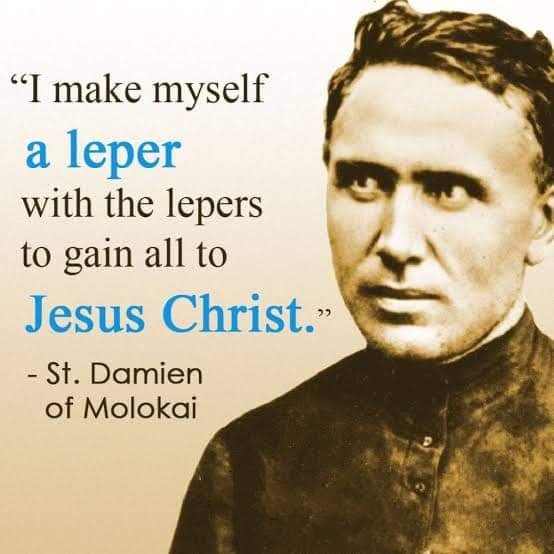
His superiors thought that he was not a good candidate for the priesthood because he lacked education. However, he was not considered unintelligent. Because he learned Latin well from his brother, his superiors decided to allow him to become a priest. During his religious studies, Damien prayed daily before a picture of St. Francis Xavier, patron of missionaries, to be sent on a mission.
Three years later when his brother Father Pamphile (Auguste) could not travel to Hawaiʻi as a missionary because of illness, Damien was allowed to take his place. On 19 March 1864, Damien arrived at Honolulu Harbor on Oʻahu. He was ordained into the priesthood on 21 May 1864, at what is now the Cathedral of Our Lady of Peace.
In 1865 Damien was assigned to the Catholic Mission in North Kohala on the island of Hawaiʻi. While he was serving in several parishes on Oʻahu, the Kingdom of Hawaiʻi was struggling with a labor shortage and a public health crisis. Many of the Native Hawaiian parishioners had high mortality rates due to infectious diseases such as leprosy (from which he later died).
There were also the diseases of smallpox, cholera, influenza, syphilis, and whooping cough, brought to the Hawaiian Islands by foreign traders, sailors, immigrants, and dogs. Thousands of Hawaiians died of such diseases, to which they had no acquired immunity. It is believed that Chinese workers carried leprosy (later known as Hansen’s disease) to the islands in the 1830s and 1840s.
At that time, leprosy was thought to be highly contagious and was incurable. In 1865, out of fear of this contagious disease, Hawaiian King Kamehameha V and the Hawaiian Legislature passed the “Act to Prevent the Spread of Leprosy.” This law quarantined the lepers of Hawaii, requiring the most serious cases to be moved to a settlement colony.
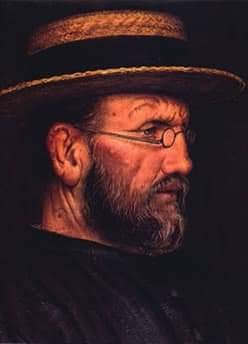
The colony was of Kalawao on the eastern end of the Kalaupapa peninsula on the island of Molokaʻi. Later the settlement of Kalaupapa was developed. Kalawao County, where the two villages are located, is separated from the rest of Molokaʻi by a steep mountain ridge. From 1866 through 1969, about 8,000 Hawaiians were sent to the Kalaupapa peninsula for medical quarantine.
The Royal Board of Health initially provided the quarantined people with food and other supplies, but it did not have the workforce and resources to offer proper health care. According to documents of that time, the Kingdom of Hawaiʻi did not intend for the settlements to be penal colonies.
Still, the Kingdom did not provide enough resources to support them. The Kingdom of Hawaii had planned for the lepers to be able to care for themselves and grow their crops. Still, due to the effects of leprosy and the peninsula’s local environmental conditions, this was impractical. By 1868, according to the Catholic Encyclopedia (1911), “Drunken and lewd conduct prevailed. The easy-going, good-natured people seemed wholly changed.
While Bishop Louis Désiré Maigret, the vicar apostolic of the Honolulu diocese, believed that the lepers needed a Catholic priest to assist them, he realized that this assignment had high risk. He did not want to send any one person “in the name of obedience.” After much prayer, four priests volunteered to go, among them Father Damien. The bishop planned for the volunteers to take turns in rotation assisting the inhabitants.
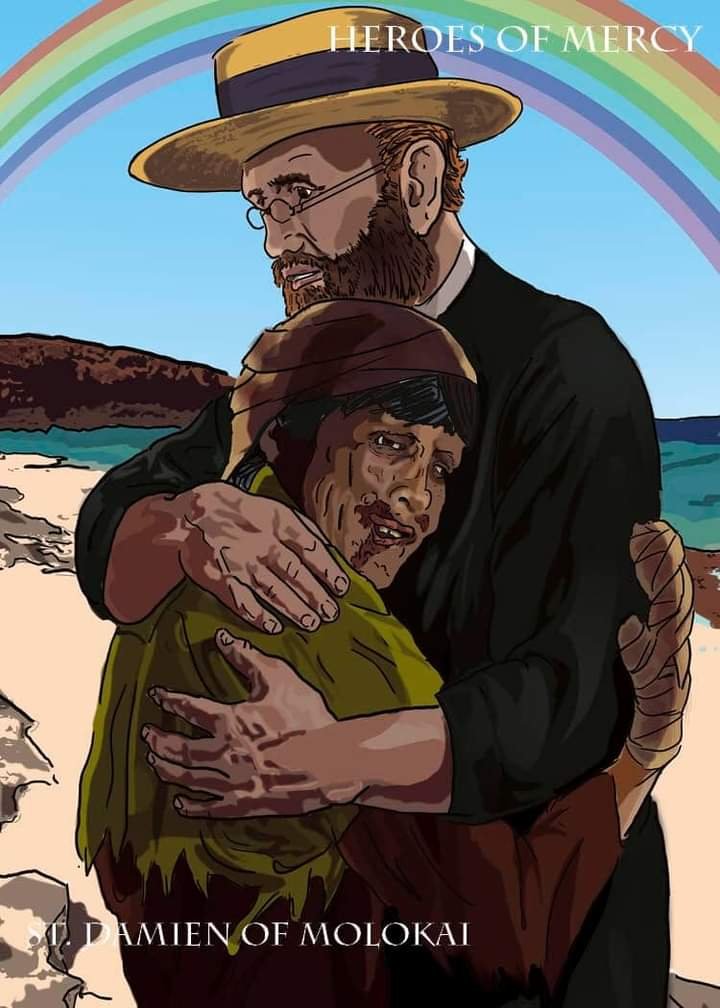
On 10 May 1873, the first volunteer, Father Damien, arrived at the isolated settlement at Kalaupapa, where there were then 600 lepers, and was presented by Bishop Louis Maigret. At his arrival, he spoke to the assembled lepers as “one who will be a father to you, and who loves you so much that he does not hesitate to become one of you; to live and die with you.”
Damien worked with them to build a church and establish the Parish of Saint Philomena. In addition to serving as a priest, he dressed residents’ ulcers, built a reservoir, built homes and furniture, made coffins, and dug graves. Six months after his arrival at Kalawao, he wrote to his brother, Pamphile, in Europe: “…I make myself a leper with the lepers to gain all to Jesus Christ.”
During this time, Father Damien cared for the lepers and established leaders within the community to improve the state of living. Father Damien aided the colony by teaching, painting houses, organizing farms, and organizing the construction of chapels, roads, hospitals, and churches.
He also dressed residents, dug graves, built coffins, ate food by hand with lepers, shared pipes with them, and lived with the lepers as equals. Father Damien also served as a priest during this time and spread the Catholic faith to the lepers; it is said that Father Damien told the lepers that despite what the outside world thought of them, they were always precious in the eyes of God.
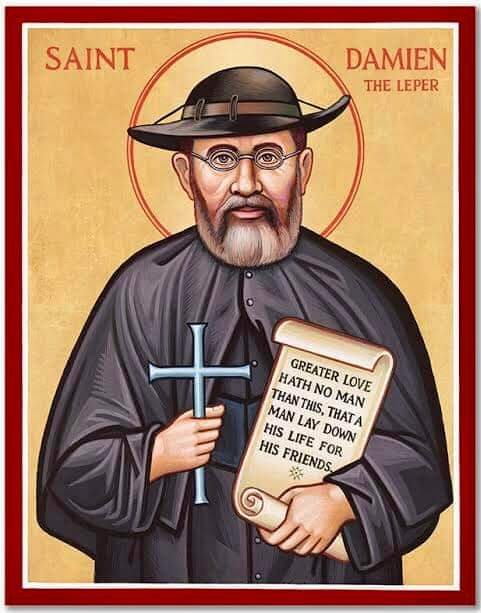 King David Kalākaua bestowed on Damien the honor of “Knight Commander of the Royal Order of Kalākaua.” When Crown Princess Lydia Liliʻuokalani visited the settlement to present the medal, she was reported as having been too distraught and heartbroken at the sight of the residents to read her speech.
King David Kalākaua bestowed on Damien the honor of “Knight Commander of the Royal Order of Kalākaua.” When Crown Princess Lydia Liliʻuokalani visited the settlement to present the medal, she was reported as having been too distraught and heartbroken at the sight of the residents to read her speech.
The princess shared her experience, acclaiming Damien’s efforts. Consequently, Damien became known internationally, in the United States and Europe. American Protestants raised large sums of money for the missionary’s work. The Church of England sent food, medicine, clothing, and supplies to the settlement.
It is believed that Damien never wore the royal medal, although it was placed by his side at his funeral. Father Damien worked for 16 years in Hawaii, providing comfort to the lepers of Kalaupapa. Not only did he give the people faith, he also built homes for them and treated them with his medical expertise. He prayed at the cemetery of the deceased and comforted the dying at their bedsides.
In December 1884, while he was preparing to bathe, Damien inadvertently put his foot into scalding water, causing his skin to blister. He felt nothing and realized that he had contracted leprosy after working in the colony for 11 years. This was a common way for people to discover that they had been infected with leprosy. Despite his illness, Damien worked even harder.
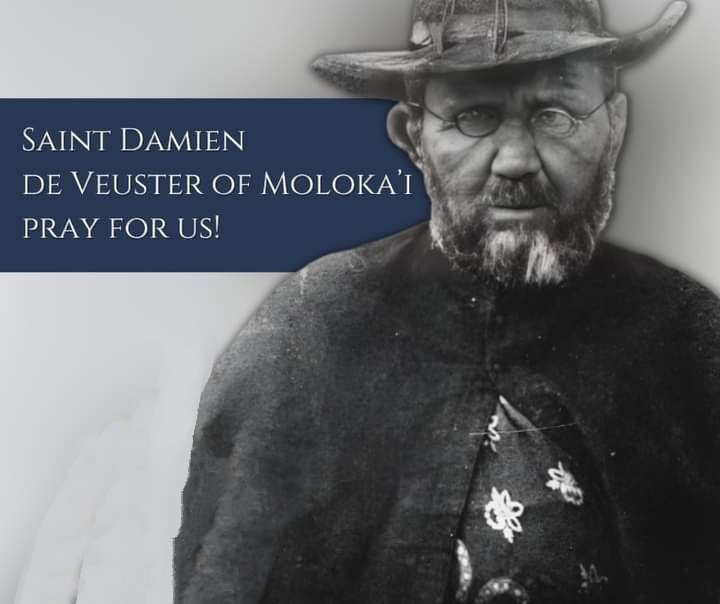
In 1885, Masanao Goto, a Japanese leprologist, came to Honolulu and treated Damien. He believed that leprosy was caused by a diminution of the blood. His treatment consisted of nourishing foods, moderate exercise, frequent friction to the benumbed parts, special ointments, and medical baths.
The treatments relieved some of the symptoms and they were very popular with the Hawaiian patients as a result. Damien had faith in the treatments and said that he only wanted to be treated by Goto, who eventually became a good friend of Father Damien.
Despite the fact that the illness was slowing his body down, Damien engaged in a flurry of activities during his last years. With his remaining time, he tried to advance and complete as many projects as possible. While he was continuing to spread the Catholic Faith and aid the lepers during their treatments, Damien completed several building projects and improved orphanages.
Four volunteers arrived at Kalaupapa to help the ailing missionary: a Belgian priest, Louis Lambert Conrardy; a soldier, Joseph Dutton (an American Civil War veteran who left behind a marriage which had been broken by his alcoholism); a male nurse from Chicago, James Sinnett; and Mother (now Saint) Marianne Cope, who had been the head of the Franciscan-run St Joseph’s Hospital in Syracuse, New York.
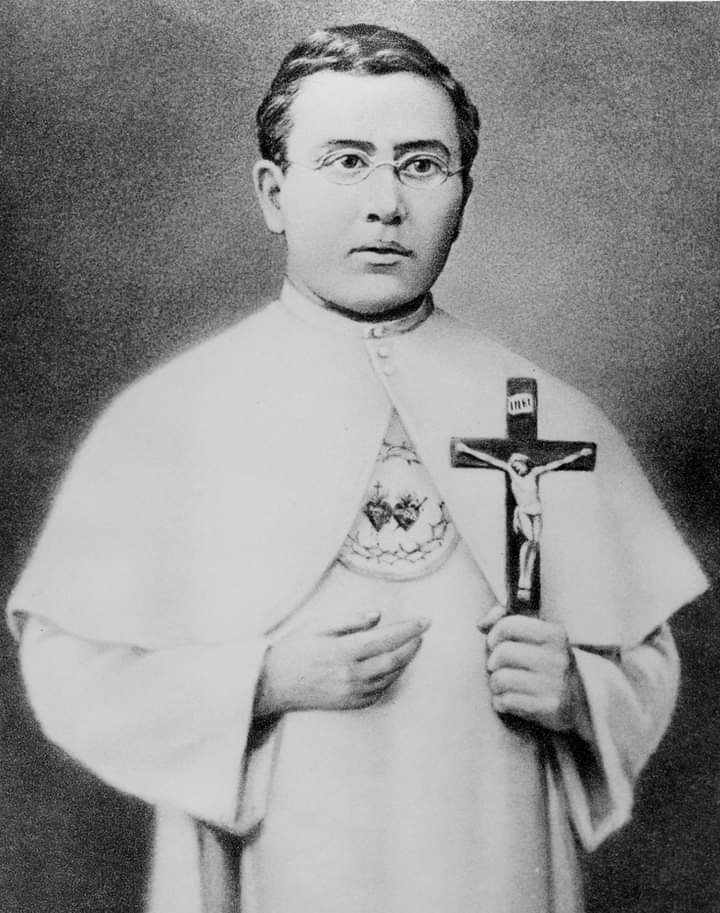
Conrardy took up Damien’s pastoral duties. Cope organized a working hospital. Dutton attended to the construction and maintenance of the community’s buildings. Sinnett nursed Damien during the last phases of his illness. With an arm in a sling, with a foot in bandages, and with his leg dragging, Damien knew that his death was near.
He was bedridden on 23 March 1889, and on 30 March, he made a general confession. Damien died of leprosy at 8:00 a.m. on 15 April 1889, at the age of 49. The next day, after the Mass was said by Father Moellers at St. Philomena’s, the whole settlement followed the funeral cortège to the cemetery. Damien was laid to rest under the same pandanus tree where he first slept upon his arrival on Molokaʻi.
In January 1936, at the request of King Leopold III of Belgium and the Belgian government, Damien’s body was returned to his native land in Belgium, transported aboard the Belgian ship Mercator. Damien was buried in Leuven, the historic university city which is close to the village where he was born. After Damien’s beatification in June 1995, the remains of his right hand were returned to Hawaii and re-interred in his original grave on Molokaʻi.
In 1977, Pope Paul VI declared Father Damien to be venerable. On 4 June 1995, Pope John Paul II beatified him and gave him his official spiritual title of Blessed. On 20 December 1999, Jorge Medina Estévez, Prefect of the Congregation for Divine Worship and the Discipline of the Sacraments, confirmed the November 1999 decision of the United States Conference of Catholic Bishops to place Blessed Damien on the liturgical calendar with the rank of an optional memorial.
Father Damien was canonized on 11 October 2009 by Pope Benedict XVI. His feast day is celebrated on 10 May. In Hawaii, it is celebrated on the day of his death, 15 April. Two miracles have been attributed to Father Damien’s posthumous intercession. On 13 June 1992, Pope John Paul II approved the cure of a nun in France in 1895 as a miracle attributed to Venerable Damien’s intercession.
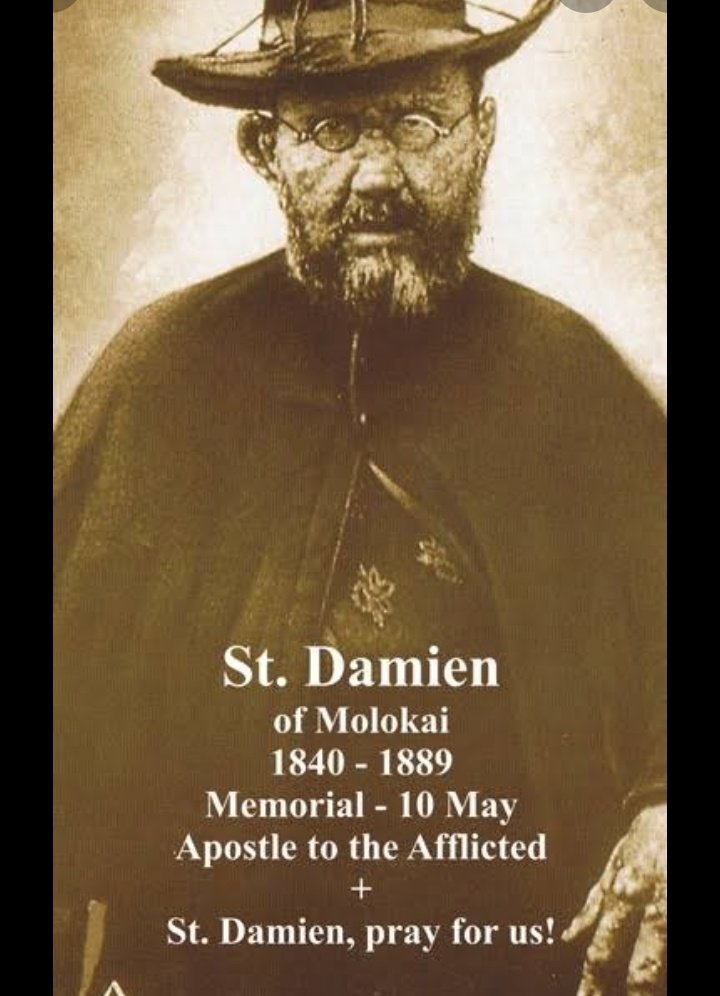
In that case, Sister Simplicia Hue began a novena to Father Damien as she lay dying of a lingering intestinal illness. It is stated that the pain and symptoms of the illness disappeared overnight. In the second case, Audrey Toguchi, a Hawaiian woman who suffered from a rare form of cancer, had remission after having prayed at the grave of Father Damien on Molokaʻi.
There was no medical explanation, as her prognosis was terminal. In 1997, Toguchi was diagnosed with liposarcoma, a cancer that arises in fat cells. She underwent surgery a year later and a tumor was removed, but the cancer metastasized to her lungs. Her physician, Dr. Walter Chang, told her, “Nobody has ever survived this cancer. It’s going to take you.” Toguchi was still alive in 2016.
In April 2008, the Holy See accepted the two cures as evidence of Father Damien’s sanctity. On 2 June 2008, the Congregation for the Causes of Saints at the Vatican voted to recommend raising Father Damien of Molokaʻi to sainthood. The decree that officially notes and verifies the miracle needed for canonization was promulgated by Pope Benedict XVI and Cardinal José Saraiva Martins on 3 July 2008.
The ceremony took place in Rome and celebrations in Belgium and Hawaii. On 21 February 2009, the Vatican announced that Father Damien would be canonized. The ceremony took place in Rome on Rosary Sunday, 11 October 2009, in the presence of King Albert II of the Belgians and Queen Paola as well as the Belgian Prime Minister.
Herman Van Rompuy, and several cabinet ministers, completed the process of canonization. In Washington, D.C., President Barack Obama affirmed his deep admiration for St. Damien, saying that he gave voice to the voiceless and dignity to the sick. Four other individuals were canonized with Father Damien at the same ceremony.
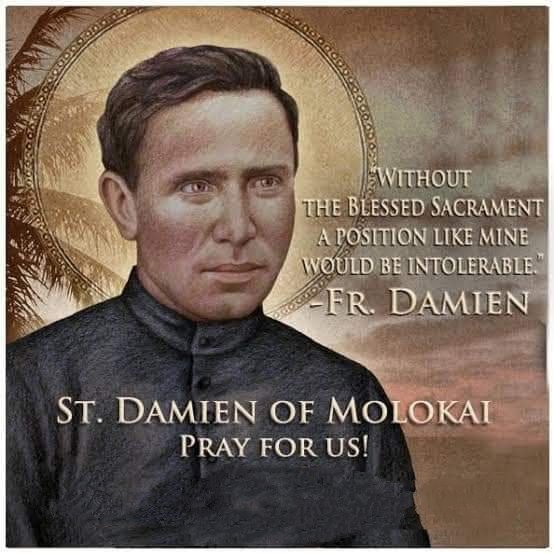
They are, Zygmunt Szczęsny Feliński, Sister Jeanne Jugan, Father Francisco Coll Guitart and Rafael Arnáiz Barón. Damien is honored, together with Marianne Cope, with a feast day on the liturgical calendar of the Episcopal Church (USA) on 15 April.
PRAYER
Saint Damien, brother of all needy souls, selfless missionary, you valued the Gospel more than your own life. For your great love of Jesus, you left your family, your home and lived an ascetic and hard life of prayer and labor.
May we too display solidarity with the outcasts of our world, and celebrate and contemplate the Eucharist as the source of our own commitment. Help us to love our fellowmen, to be courageous in adversity and with strength of the Spirit, persevere in compassion for the poor, so that we might be good disciples of Jesus and Mary. Amen